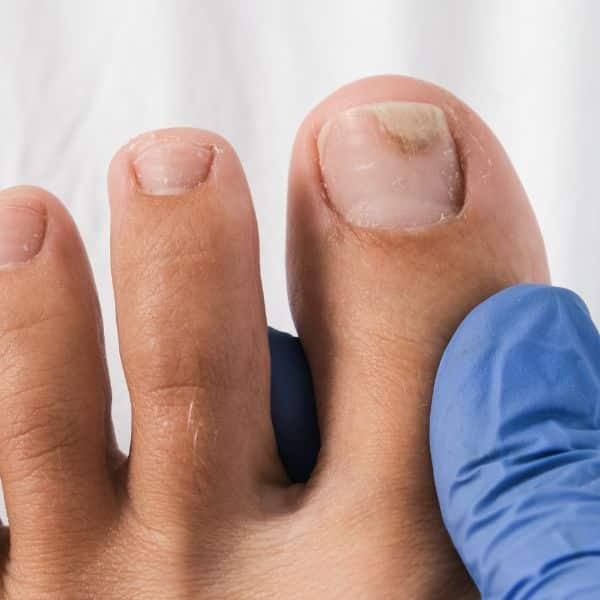4 Easy Exercises For Plantar Fasciitis Relief
Plantar fasciitis, a common culprit of heel pain, results from inflammation of the thick band of tissue running across the bottom of the foot. This tissue, known as the plantar fascia, links the heel bone to the toes. If you’re one of the many people afflicted with this common foot condition, you know how agonising and limiting the pain can be. Fortunately, specific exercises for plantar fasciitis relief can promote healing.
Why Stretching Is Important for Plantar Fasciitis Relief
If you’re experiencing persistent heel pain, particularly when taking your first steps in the morning, there’s a good chance plantar fasciitis is to blame. This condition often worsens due to tightness in the plantar fascia, calf muscles, and Achilles tendon. That’s why targeted plantar fasciitis stretches and exercises can make a real difference. Regular stretching improves flexibility, supports healing, and helps prevent the fascia from tightening up again—particularly after long periods of rest.
Incorporating daily heel pain exercises into your routine can also help address the root causes of discomfort. These foot stretches for plantar fasciitis are safe, easy to perform at home, and recommended by many podiatrists as a first line of treatment. If you’re wondering what the best exercises for plantar fasciitis are, the four listed below are a great starting point.
1. The Toe Stretches
Plantar fasciitis can often make every step a painful ordeal. One of the primary reasons for this discomfort is the tightening and inflammation of the plantar fascia – the band of tissue running across the foot’s underside. The Toe Stretch, a simple yet effective exercise, targets this exact area. By directly stretching the plantar fascia, this exercise can offer significant relief, promote flexibility, and potentially speed up recovery.
How To Perform The Toe Stretch:
Position: Sit comfortably in a chair with your feet flat on the ground.
Action: Grasp your big toe, pulling it gently back towards your ankle.
Checkpoint: Ensure you feel a stretch along the bottom of your foot.
Duration: Maintain this stretch for 15-30 seconds.
Repetitions: Repeat this 3 times for each foot.
Incorporating the Toe Stretch into your daily routine can be a game-changer, especially for those battling the persistent pain of plantar fasciitis. Not only does it provide immediate relief, but consistent practice can also contribute to long-term foot health.
Benefits of Toe Stretches for Plantar Fasciitis
Toe stretches may seem simple, but they’re incredibly effective at targeting tension where it hurts most. By stretching the base of the foot and the plantar fascia, you reduce the risk of micro-tears and allow the tissue to heal more efficiently. This is especially helpful if you experience heel pain from plantar fasciitis first thing in the morning. For best results, combine this with other plantar fasciitis exercises for a full recovery plan.
2. The Towel Stretch
While the agonising symptoms of plantar fasciitis can seem relentless, relief might be as close as your linen closet. The Towel Stretch is a simple yet powerful exercise that makes use of a common household item. This exercise targets both the plantar fascia and the calf muscles, helping to alleviate the tension that can exacerbate heel pain. The added benefit? By utilising a towel, you ensure a consistent and controlled stretch, maximising relief and promoting overall foot flexibility.
How To Perform The Towel Stretch:
Position: Sit on the floor with your legs outstretched in front of you.
Preparation: Roll up a towel and position it under the ball of your foot, securing both ends with your hands.
Action: With your knee straightened, gently pull the towel towards you.
Checkpoint: You should feel a stretch in the arch of your foot and up through your calf.
Duration: Hold this position for 15-30 seconds.
Repetitions: Complete the stretch 3 times for each foot.
Incorporating the Towel Stretch into your daily routine can serve as an effective tool in your arsenal against plantar fasciitis. Its simplicity combined with its effectiveness makes it an essential exercise for those seeking relief and improved foot health.
Why the Towel is Your Friend for Plantar Fasciitis Stretches
The towel stretch for plantar fasciitis is a go-to for healthcare professionals because it not only stretches the plantar fascia but also lengthens the calves and hamstrings. This holistic approach helps relieve pressure on the heel and arch. For those seeking plantar fasciitis treatment at home, this exercise is both accessible and highly effective. If you’re looking for quick relief for plantar fasciitis, incorporating towel stretches into your morning and evening routine can make a noticeable difference.
3. The Calf Stretch
For those suffering from plantar fasciitis, the primary point of pain might be the foot, but the issue often doesn’t stop there. Tight calf muscles are a common culprit that can intensify the condition, creating a chain of discomfort that travels down from the leg to the heel. Enter the Calf Stretch: a pivotal exercise that zeroes in on these tightened muscles. By focusing on the calves, this stretch not only provides immediate relief to the leg muscles but also indirectly soothes the plantar fascia, setting you on the path to a more pain-free stride.
How To Perform The Calf Stretch:
Position: Stand about an arm’s length away from a wall.
Preparation: Place your hands on the wall at eye level.
Action: Step one foot back, ensuring it remains flat on the floor. Slightly bend the opposite knee forward.
Checkpoint: As you push your hips toward the wall, you should sense a stretch in the calf of the extended leg.
Duration: Hold this stretch for 15-30 seconds.
Repetitions: Practise this stretch 3 times for each leg.
Making the Calf Stretch a regular part of your daily routine is a proactive step toward countering the effects of plantar fasciitis. By releasing the tension in the calves, you alleviate the strain on your foot, promoting better posture, balance, and overall foot well-being.
The Link Between Calf Tightness and Heel Pain
Tight calf muscles are one of the most overlooked contributors to plantar fasciitis. When the calves are shortened or inflexible, they pull on the heel and increase strain on the plantar fascia. This creates a vicious cycle of inflammation and pain. Including calf stretches for plantar fasciitis relief in your daily routine can ease this tension and help reduce heel pain over time. It’s one of the most effective long-term strategies for managing plantar fasciitis naturally.
4. The Achilles Tendon Stretch
The complex anatomy of our feet means that pain in one area can often be linked to tension in another. For individuals with plantar fasciitis, the Achilles tendon plays a surprisingly pivotal role. This tendon, which connects the calf muscle to the heel bone, shares a biomechanical relationship with the plantar fascia. When the Achilles tightens, it can increase tension in the plantar fascia, amplifying discomfort. The Achilles Tendon Stretch, therefore, offers a dual benefit: it directly soothes the Achilles while indirectly relieving the plantar fascia, acting as a comprehensive solution for those in search of relief.
How To Perform The Achilles Tendon Stretch:
Position: Stand upright with one foot staggered behind the other, toes pointing straight ahead.
Action: Gently bend the back knee, emphasising keeping the heel of that foot pressed to the ground.
Checkpoint: As you deepen into the stretch, you should discern a pull along your heel cord (Achilles tendon) and into the arch of your foot.
Duration: Maintain this stretch for a span of 15-30 seconds.
Repetitions: Engage in this stretch 3 times for each foot.
Incorporating the Achilles Tendon Stretch into your regimen can make a world of difference. By targeting a critical area that affects plantar fasciitis, you’re not only tackling the symptoms but addressing a root cause, paving the way for long-term relief and improved foot health.
Don’t Skip the Achilles Stretch
If your Achilles tendon is tight, your entire foot mechanics can become imbalanced. A shortened Achilles increases the strain on the plantar fascia during walking and standing. Performing an Achilles tendon stretch for plantar fasciitis helps reduce heel pressure and supports healthy foot function. Even if your pain is isolated to the heel, stretching this tendon plays a vital role in plantar fasciitis recovery. Aim to do this stretch after exercise, walking, or long periods of sitting to maintain flexibility.
Bonus Tips: Getting the Most from Your Plantar Fasciitis Exercises
To see the best results, consistency is key. Perform these plantar fasciitis stretches and exercises twice a day—once in the morning to reduce stiffness, and again in the evening to ease tension from the day. If you’re experiencing pain in your heel when walking, it’s especially important to avoid going barefoot on hard surfaces. Supportive footwear, combined with daily heel pain relief exercises, can significantly accelerate healing.
You might also want to try icing your heel after stretching, using a massage ball to roll out the arch of your foot, or wearing night splints to keep the fascia gently stretched overnight. These added techniques work alongside your daily stretches to provide more comprehensive plantar fasciitis relief at home.
Frequently Asked Questions About Plantar Fasciitis Exercises
What is the fastest way to relieve plantar fasciitis pain?
The fastest way to relieve plantar fasciitis is to combine plantar fascia stretches, heel-supporting footwear, and ice therapy. Exercises like the towel stretch and Achilles tendon stretch can offer near-immediate relief when done consistently.
Can exercises cure plantar fasciitis?
While exercises alone may not cure plantar fasciitis overnight, they are a critical part of most successful treatment plans. Consistent stretching and strengthening can reduce inflammation, support healing, and help prevent future flare-ups.
What are the best exercises for plantar fasciitis at home?
The toe stretch, towel stretch, calf stretch, and Achilles tendon stretch are some of the best home-based exercises. These target both the plantar fascia and surrounding muscles that influence foot health.
How long should I keep doing plantar fasciitis stretches?
It’s best to continue these exercises daily for at least 6–8 weeks, even if pain improves earlier. Long-term consistency supports better outcomes and reduces the risk of recurrence.
When Plantar Fasciitis Stretches Aren’t Enough
Remember, while exercises can provide relief, they’re only a part of the overall strategy to manage plantar fasciitis. Pair them with proper footwear, maintain a healthy weight, and consider other treatments like orthotics or physical therapy if needed.
These exercises can be easily incorporated into your daily routine. Consistency is key, so make sure to perform them regularly. That being said, these exercises aren’t always enough to solve the problem. If you experience severe pain or if your symptoms persist despite these exercises, it might be time to consult a healthcare professional or podiatrist.
Get in touch or drop into our Northwich clinic for expert advice on relieving your plantar fasciitis.





